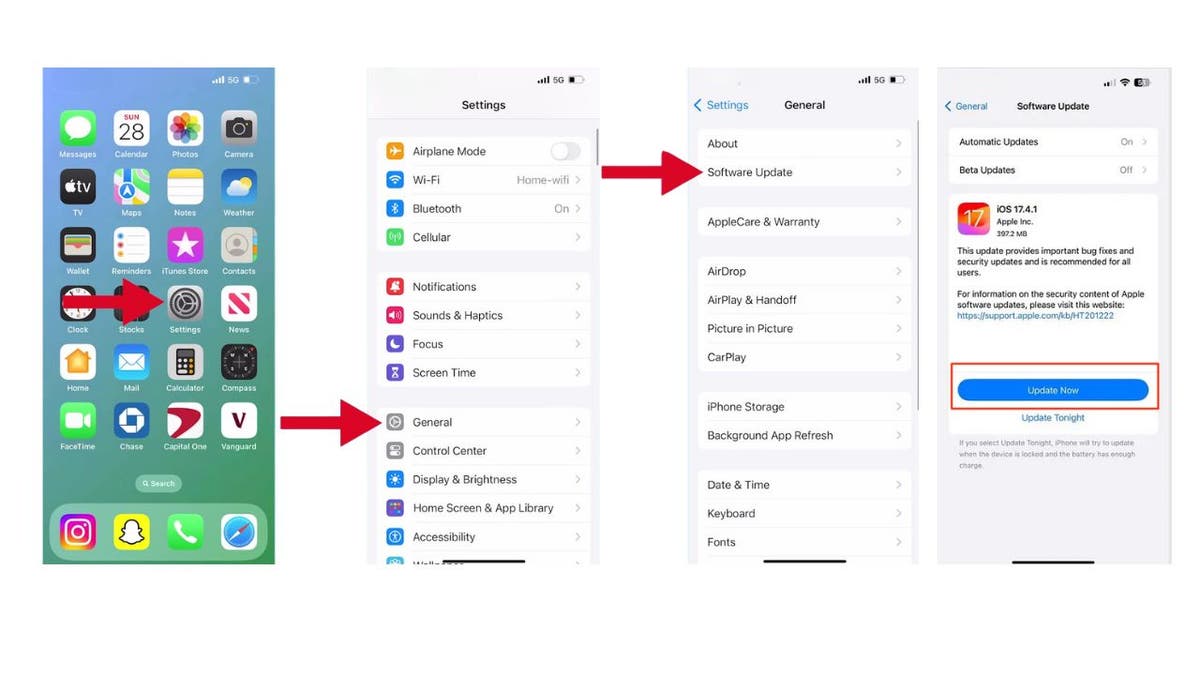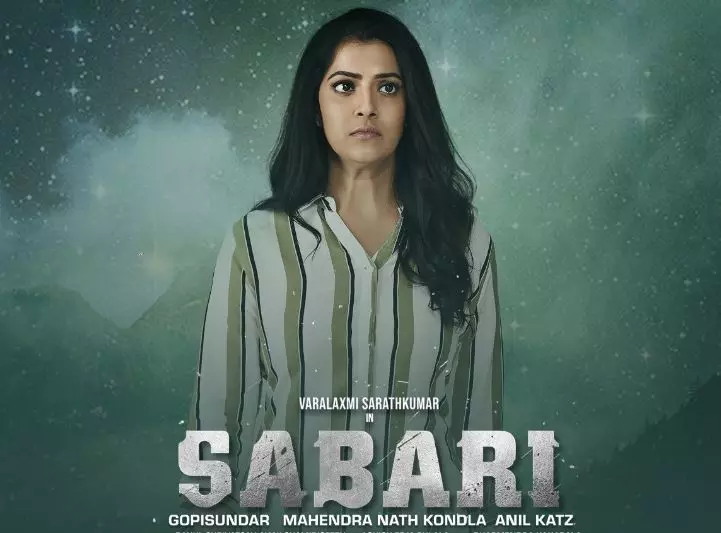I’ve tried lots of different ways to light up the patio in my backyard so I can enjoy sitting outside into the wee hours. Everything from fairy lights to path lights to standard string lights has been wrapped around the myrtles or dug into the borders. But none have survived more than a couple of scorching South Carolina summers. So, I was excited to test two new smart outdoor string lights from Nanoleaf and Lifx.
Technology
Smart string light showdown: Nanoleaf versus Lifx
/cdn.vox-cdn.com/uploads/chorus_asset/file/25387393/247055_VS_Review_04112024_CVirginia_D.jpg)
The Nanoleaf Matter Smart Multicolor Outdoor String Lights ($129.99 for a 49-foot string with 20 bulbs) and Lifx Outdoor SuperColor String Lights ($129 for a 24-foot light string with 12 bulbs) both feature individually addressable full-color and tunable white LED bulbs and are capable of gradient lighting effects. This makes them super versatile. I can have a green and gold-themed St. Paddy’s Day party in March, a red, white, and blue-themed Fourth of July bash, and a lovely soft candlelight white for dinner al fresco anytime.
Both are compatible with all major smart home platforms, so I can set the lights on schedules, control them with voice commands, and have them turn on when the patio door opens using a contact sensor. Most importantly, both these brands’ string lights are seriously sturdy. After watching them survive a cracking spring storm last week, I’m hopeful that these could be a more permanent solution to illuminating my backyard.
I tested the Lifx and Nanoleaf head-to-head over two weeks. Read on to see which came out on top and which could be a good fit for your garden this summer.
Design and build quality: Lifx looks good, but Nanoleaf is so sparkly!
These are not your mother’s string lights. Nanoleaf and Lifx have gone for bold industrial design, with Nanoleaf building on its dodecahedron heritage to produce a gorgeous light bulb. The faceted face creates a lovely effect that looks like a crystal hanging from my trees and is dazzling even when off.
Lifx has gone for an ultra-modern, Tron-style look — a tubular shape with a stick of light inside. They’re stylish but with less flair than Nanoleaf’s. I do like that the Lifx bulbs attach directly to the string and don’t dangle as far down as the Nanoleaf, creating a cleaner look. This makes the Lifx a better choice for hanging along a structure like the wall of a porch.
Both lights feel solid and durable, and the acrylic bulbs don’t break when dropped. The cables and plugs are similarly super heavy-duty, being weatherproof and holding up to rough handling during installation. Neither offers replaceable bulbs, but if a bulb goes bad, both string lights are covered under two-year warranties.
Light quality: Lifx has serious range
The Lifx’s color rendering and tunable white light are very impressive. With a color rendering index (CRI) of 90 and white light that goes from rich, warm candlelight at 1500 Kelvins to an icy blue cool white at 9000 Kelvins, the Lifx has better color and a broader range of white than Nanoleaf (80CRI and 2700K to 6500K).
Its colors are also more saturated; red on the Lifx is really red, whereas on the Nanoleaf, it’s more pink and softer. But while brighter is usually better in a light bulb, I’d argue that accent light in your garden is one place you probably don’t need to go for the brightest.
Lighting effects and features: Lifx’s color blending is mind-bending
Each Lifx bulb has three addressable zones that blend together in an almost magical way. It’s hard to pinpoint which color you’re seeing; instead, it’s just a soft ambiance, a welcome change from jarring multicolor effects on most addressable lighting I’ve tested.
While the Nanoleaf bulbs can only show one color at a time per bulb, the cut glass design does create an array of different shades. Nanoleaf’s scenes can also cycle through different colors to give a similar effect to the Lifx, but Lifx’s technology is better.
Lifx also has more options for flashier effects. Options like twinkle, color cycle, strobe, and morph created a fun ambiance on my patio, and I could adjust features like speed, colors, and direction. Lifx has a decent library of colorful lighting designs and I really like the art series inspired by pieces such as Van Gogh’s The Starry Night.
However, Nanoleaf has many more designs to choose from, including hundreds of user-generated ones. A handful were created just for the string lights; my favorites were Sunset Sky, which cycled through warm reds and oranges, and Twilight, with crisp whites and soft grays.
I could create my own designs in both apps, with Lifx’s being the easiest to use. Nanoleaf’s app is messy and crashes a lot, but its new AI scene generator makes it easier to create new designs without struggling through the app.
Lifx’s app also has basic functions like setting schedules, which is frustratingly not an option with Nanoleaf — to set a schedule, you need to use a third-party smart home platform.
Cost: Nanoleaf is cheaper and longer
While both string lights start at $130, for that Nanoleaf gives you 20 bulbs on almost 50 feet compared to just 12 bulbs over 24 feet on the Lifx (30 feet including the power cord). The Lifx are closer together, though, at 23 inches apart compared to 28 inches for Nanoleaf.
Nanoleaf is the better deal, especially for a large area like my patio. The 98-foot string with 40 bulbs is $200, and the 147-foot string with 60 bulbs is $300. In comparison, the maximum length of the Lifx — three strings together, totaling 74 feet and 36 bulbs — costs almost $400.
Connectivity and compatibility: Nanoleaf has more connection options, but Lifx is more reliable (so far)
The Nanoleaf and Lifx lights work over 2.4GHz Wi-Fi. While the Lifx connected easily, I struggled to get the Nanoleaf on the same network, even though both lights were set up in the same location. Eventually, moving the router closer to the Nanoleaf worked.
Both lights will work with Apple Home, Google Home, Amazon Alexa, and Samsung SmartThings. As part of Nanoleaf’s Matter Essentials line, the Nanoleaf string lights connect to smart home platforms via Matter-over-Wi-Fi. This means it works with any Matter-compatible platform. However, you will need a Matter controller to connect.
Lifx relies on individual integrations with each platform, so it works with fewer but doesn’t require any additional hardware. Lifx says a firmware upgrade will bring the option of Matter-over-Wi-Fi compatibility later this year.
As is par for the course with Matter and me, it took multiple attempts to get the Nanoleaf lights onto a Matter platform. I wasn’t able to connect at all using my iPhone 15. Eventually, with a Samsung Galaxy S22 I connected to SmartThings and, from there, successfully shared the lights with Apple Home and Amazon Alexa using Matter’s multi-admin feature. You don’t have to use Matter with the Nanoleaf; you can connect directly to the Nanoleaf app over Bluetooth and Wi-Fi, but you will need Matter for smart home integrations.
Both these string lights will make spring sparkle
These are both very nice string lights. They’re expensive but built to last. While Lifx has better lighting effects and an easier-to-use app, the Nanoleaf has the edge in terms of overall look. The bulb shape is just gorgeous and looks so nice in my backyard. While not as bright as Lifx, the whites and colors provide more than enough richness and warmth for ambient outdoor lighting. Lifx’s effects and color blending are very impressive, but Nanoleaf’s soft, sparkly glow won me over. Plus, it’s more affordable.
Both Lifx and Nanoleaf have other smart outdoor lighting options, so you can sync their lighting effects across your whole landscape. However, Philips Hue has the biggest outdoor selection (although, strangely, no string lights).
There are also other options for smart string lights, including those from Govee, Twinkly, and Wiz. But these are all the traditional round bulb shapes. Nanoleaf and Lifx have added unique twists to the outdoor string light look, and both have done it very well.
Photos by Jennifer Pattison Tuohy / The Verge

Technology
The new iPad Pro looks like a winner
/cdn.vox-cdn.com/uploads/chorus_asset/file/25441652/Installer_37.png)
Hi, friends! Welcome to Installer No. 37, your guide to the best and Verge-iest stuff in the world. (If you’re new here, welcome, send me links, and also, you can read all the old editions at the Installer homepage.)
This week, I’ve been writing about iPads and LinkedIn games, reading about auto shows and typewriters and treasure hunters, watching Everybody’s in LA and Sugar, looking for reasons to buy Yeti’s new French press even though I definitely don’t need more coffee gear, following almost all of Jerry Saltz’s favorite Instagram accounts, testing Capacities and Heptabase for all my note-taking needs and Plinky for all my link-saving, and playing a lot of Blind Drive.
I also have for you a thoroughly impressive new iPad, a clever new smart home hub, a Twitter documentary to watch this weekend, a sci-fi show to check out, a cheap streaming box, and much more. Let’s do it.
(As always, the best part of Installer is your ideas and tips. What are you reading / watching / cooking / playing / building right now? What should everyone else be into as well? Email me at installer@theverge.com or find me on Signal at @davidpierce.11. And if you know someone else who might enjoy Installer, and tell them to subscribe here.)
The Drop
- The new iPad Pro. The new Pro is easily the most impressive piece of hardware I’ve seen in a while. It’s so thin and light, and that OLED screen… gorgeous. It’s bonkers expensive, and the iPad’s big problem continues to be its software, but this is how you build a tablet, folks.
- Animal Well. Our friends over at Polygon called this “one of the most inventive games of the last decade,” which is obviously high praise! By all accounts, it’s unusual, surprising, occasionally frustrating, very smart, and incredibly engaging. Even the trailer looks like nothing I’ve seen before. (I got a lot of recommendations for this one this week — thanks to everyone who sent it in!)
- Final Cut Camera. This only got a quick mention at Apple’s event this week, but it’s kind of a huge deal! It’s a first-party, pro-level camera app for iPhones and iPads that gives you lots of manual control and editing features. It’s exactly what a lot of creatives have been asking for. No word yet on exactly when it’ll be available, but I’m excited.
- The Aqara Hub M3. The only way to manage your smart home is to make sure your devices can support as many assistants, protocols, and platforms as possible. This seems like a way to do it: it’s a Matter-ready device that can handle just about any smart-home gear you throw at it.
- “Battle of the Clipboard Managers.” I don’t think I’ve ever linked to a Reddit thread here, but check this one out: it’s a long discussion about why a clipboard manager is a useful tool, plus a bunch of good options to choose from. (I agree with all the folks who love Raycast, but there are a lot of choices and ideas here.)
- Proton Pass. My ongoing No. 1 piece of technology advice is that everyone needs a password manager. I’m a longtime 1Password fan, but Proton’s app is starting to look tempting — this week, it got a new monitoring tool for security threats, in addition to all the smart email hiding and sharing features it already has.
- The Onn 4K Pro. Basically all streaming boxes are ad-riddled, slow, and bad. This Google TV box from Walmart is at least also cheap, comes with voice control and support for all the specs you’d want, and works as a smart speaker. I love a customizable button, too.
- Dark Matter. I’ve mostly loved all the Blake Crouch sci-fi books I’ve read, so I have high hopes for this Apple TV Plus series about life in a parallel universe. Apple TV Plus, by the way? Really good at the whole sci-fi thing.
- The Wordle archive. More than 1,000 days of Wordle, all ready to be played and replayed (because, let’s be honest, who remembers Wordle from three weeks ago?). I don’t have access to the archive yet, but you better believe I’ll be playing it all the way through as soon as it’s out.
- Black Twitter: A People’s History. Based on a really fun Wired series, this is a three-part deep dive Hulu doc about the ways Black Twitter took over social media and a tour of the internet’s experience of some of the biggest events of the last decade.
Screen share
Kylie Robison, The Verge’s new senior AI reporter, tweeted a video of her old iPhone the other day that was like a perfect time capsule of a device. She had approximately 90,000 games, including a bunch that I’m 100 percent sure were scams, and that iPod logo in her dock made me feel a lot of things. Those were good days.
I messaged Kylie in Slack roughly eight minutes after she became a Verge employee, hoping I could convince her to share her current homescreen — and what she’d been up to during her funemployment time ahead of starting with us.
Sadly, she says she tamed her homescreen chaos before starting, because something something professionalism, or whatever. And now she swears she can’t even find a screenshot of her old homescreen! SURE, KYLIE. Anyway, here’s Kylie’s newly functional homescreen, plus some info on the apps she uses and why.
The phone: iPhone 14 Pro Max.
The wallpaper: A black screen because I think it’s too noisy otherwise. (My lock screen is about 20 revolving photos, though.)
The apps: Apple Maps, Notes, Spotify, Messages, FaceTime, Safari, Phone.
I need calendar and weather apps right in front of me when I unlock my phone because I’m forgetful. I use Spotify for all things music and podcasts.
Work is life so I have all those apps front and center, too (Signal, Google Drive, Okta).
Just before starting, I reorganized my phone screen because 1) I had time and 2) I knew I’d have to show it off for David. All the apps are sorted into folders now, but before, they were completely free-range because I use the search bar to find apps; I rarely scroll around. So just imagine about 25 random apps filling up all the pages: Pegasus for some international flight I booked, a random stuffed bell pepper recipe, what have you.
I also asked Kylie to share a few things she’s into right now. Here’s what she shared:
- Stardew Valley took over my life during my work break.
- I actually started 3 Body Problem because of an old Installer. Also, I loved Fallout and need more episodes.
- My serious guilty pleasure is Love Island UK, and I’ve been watching the latest season during my break.
Crowdsourced
Here’s what the Installer community is into this week. I want to know what you’re into right now as well! Email installer@theverge.com or hit me up on Signal — I’m @davidpierce.11 — with your recommendations for anything and everything, and we’ll feature some of our favorites here every week. And if you want even more recommendations, check out the replies to this post on Threads.
“I have always found Spotify’s recommendation algorithm and music channels to be terrible; wayyy too much fussing and tailoring required when all I want is to hit play and get a good diversity of music I will like. So I finally gave up and tried Pandora again. Its recommendation / station algorithm is so wildly better than Spotify’s (at least for me), it’s shocking how it has seemed to fade into cultural anonymity. Can’t speak for others, but if anyone out there is similarly frustrated with Spotify playlists, I highly recommend the Pandora option.” – Will
“Everything coming out of Netflix Is a Joke Fest has been 10/10.” – Mike
“Mantella mod for Skyrim (and Fallout 4). Not so much a single mod, but a mod plus a collection of apps that gives (basically) every NPC their own lives and stories. It’s like suddenly being allowed to participate in the fun and games with Woody and Buzz, rather than them having to say the words when you pull the string.” – Jonathan
“The Snipd podcast app (whose primary selling point is AI transcription of podcasts and the ability to easily capture, manage, and export text snippets from podcasts) has a new feature that shows you a name, bio, and picture for podcast guests, and allows you to find more podcasts with the same guest or even follow specific guests. Pretty cool!” – Andy
“I have recently bought a new Kindle, and I’m trying to figure out how to get news on it! My current plan is to use Omnivore as my bookmarks app, which will sync with this awesome community tool that converts those bookmarks into a Kindle-friendly website.” – David
“Turtles All the Way Down! Great depiction of OCD.” – Saad
“With all the conversation around Delta on iOS, I have recently procured and am currently enamored with my Miyoo Mini Plus. It’s customizable and perfectly sized, and in my advanced years with no love for Fortnite, PUBG, or any of the myriad of online connected games, it’s lovely to go back and play some of these ‘legally obtained’ games that I played in my childhood.” – Benjamin
“Rusty’s Retirement is a great, mostly idle farm sim that sits at the bottom or the side of your monitor for both Mac and Windows. Rusty just goes and completes little tasks of his own accord while you work or do other stuff. It rocks. Look at him go!” – Brendon
“Last week, Nicholas talked about YACReader and was asking for another great comic e-reader app for DRM-free files. After much searching myself, I settled on Panels for iPad. Great Apple-native UI, thoughtful features, and decent performance. The free version can handle a local library, but to unlock its full potential, the Pro version (sub or lifetime) supports iCloud, so you can keep all your comics in iCloud Drive, manage the files via a Mac, and only download what you’re currently reading — great for lower-end iPads with less storage.” – Diogo
Signing off
I have spent so much time over the years trying to both figure out and explain to people the basics of a camera. There are a billion metaphors for ISO, shutter speed, and aperture, and all of them fall short. That’s probably why a lot of the photographer types I know have been passing around this very fun depth of field simulator over the last few days, which lets you play with aperture, focal length, sensor size, and more in order to understand how different settings change the way you take photos. It’s a really clever, simple way to see how it all works — and to understand what becomes possible when you really start to control your camera. I’ll be sharing this link a lot, I suspect, and I’m learning a lot from it, too.
Technology
No more missed alarms: How to crank up your iPhone’s alarm volume

We’ve all been there — oversleeping because we didn’t hear our phone alarm. If your iPhone alarm volume seems too low, don’t worry. I’ll walk you through the steps to make it louder.
A woman holding an iPhone (Kurt “CyberGuy” Knutsson)
How to update your iPhone’s software
Before adjusting alarm settings, ensure that your iPhone’s software is up to date. Follow these steps:
- Open Settings
- Tap on General
- Select Software Update
- If an update is available, tap Update Now
- Your iPhone will reboot to complete the latest iOS version
HOW TO UNLOCK SPECIAL FEATURES ON YOUR IPHONE TO IMPROVE VOICE SEARCH

Steps to update your iPhone’s software (Kurt “CyberGuy” Knutsson)
MORE: HOW TO HIDE APPS ON YOUR IPHONE TO KEEP THEM SECRET
How to adjust the alarm volume on an iPhone
Now, let’s focus on changing the alarm volume:
- Open Settings
- Scroll down and tap on Sounds & Haptics
- Look for Ringtone and Alerts at the top
- Adjust the volume slider as needed

Steps to adjust the alarm volume on an iPhone (Kurt “CyberGuy” Knutsson)
MORE: TRY OUT THESE 10 SIRI HIDDEN HACKS ON YOUR IPHONE TODAY
Kurt’s key takeaways
By following these simple steps, you can ensure that your iPhone alarm wakes you up promptly. Remember to update your software and customize your alarm volume to your preference.
In what ways do you think Apple could enhance the iPhone’s alarm or notification system to serve your needs better? Let us know by writing us at Cyberguy.com/Contact
For more of my tech tips and security alerts, subscribe to my free CyberGuy Report Newsletter by heading to Cyberguy.com/Newsletter
Ask Kurt a question or let us know what stories you’d like us to cover
Answers to the most asked CyberGuy questions:
Copyright 2024 CyberGuy.com. All rights reserved.
Technology
OpenAI could debut a multimodal AI digital assistant soon
/cdn.vox-cdn.com/uploads/chorus_asset/file/24390406/STK149_AI_03.jpg)
OpenAI has been showing some of its customers a new multimodal AI model that can both talk to you and recognize objects, according to a new report from The Information. Citing unnamed sources who’ve seen it, the outlet says this could be part of what the company plans to show on Monday.
The new model reportedly offers faster, more accurate interpretation of images and audio than what its existing separate transcription and text-to-speech models can do. It would apparently be able to help customer service agents “better understand the intonation of callers’ voices or whether they’re being sarcastic,” and “theoretically,” the model can help students with math or translate real-world signs, writes The Information.
The outlet’s sources say the model can outdo GPT-4 Turbo at “answering some types of questions,” but is still susceptible to confidently getting things wrong.
It’s possible OpenAI is also readying a new built-in ChatGPT ability to make phone calls, according to Developer Ananay Arora, who posted the above screenshot of call-related code. Arora also spotted evidence that OpenAI had provisioned servers intended for real-time audio and video communication.
None of this would be GPT-5, if it’s being unveiled next week. CEO Sam Altman has explicitly denied that its upcoming announcement has anything to do with the model that’s supposed to be “materially better” than GPT-4. The Information writes GPT-5 may be publicly released by the end of the year.
-

 News1 week ago
News1 week agoSome Florida boaters seen on video dumping trash into ocean have been identified, officials say
-

 Education1 week ago
Education1 week agoVideo: President Biden Addresses Campus Protests
-

 World1 week ago
World1 week agoUN, EU, US urge Georgia to halt ‘foreign agents’ bill as protests grow
-

 World1 week ago
World1 week agoEuropean elections: What do voters want? What have candidates pledged?
-

 Movie Reviews1 week ago
Movie Reviews1 week agoSabari Movie Review: Varalaxmi Proves She Can Do Female Centric Roles
-

 Politics1 week ago
Politics1 week agoAustralian lawmakers send letter urging Biden to drop case against Julian Assange on World Press Freedom Day
-

 News1 week ago
News1 week agoWhistleblower Joshua Dean, who raised concerns about Boeing jets, dies at 45
-

 World1 week ago
World1 week agoBrussels, my love? Champage cracked open to celebrate the Big Bang












